#Gamification Of Learning
Explore tagged Tumblr posts
Text
Engage Your Team: The Gamification Company's Employee Apps
Unlock the power of gamification apps for employee engagement with The Gamification Company. Our innovative solutions transform mundane tasks into exciting challenges, fostering a culture of collaboration and motivation. From interactive training modules to performance tracking tools, our apps inspire productivity and boost morale. With customizable features and real-time feedback, managers can effortlessly monitor progress and recognize achievements, driving continuous improvement. Empower your workforce to reach new heights and cultivate a vibrant work environment with The Gamification Company's cutting-edge solutions.
0 notes
Text
EduTech Marvels: Transformative Technologies in Education
If someone asks you to look for a restaurant for dinner, you will invariably search for it on the web. All of us are dependent on technology to find answers to common questions. The internet has taken the world by storm and is the most effective way to get answers to any question. In all fields, from travel to education, the impact of technology is felt everywhere. What seemed to be a distant…
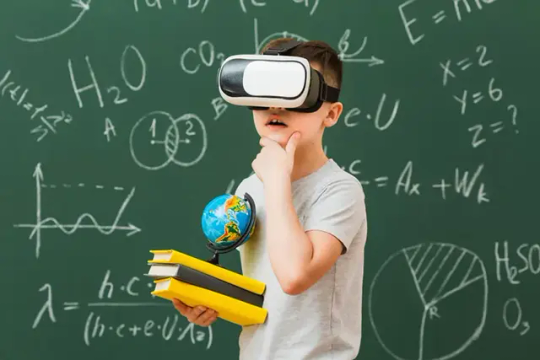
View On WordPress
#Adaptive Learning Technologies#Artificial Intelligence#Blockchain Technology#Cloud-Based Learning#EduTech Marvels#Gamification Of Learning#Robotics#Technologies In Education#Virtual And Augmented Reality
0 notes
Text

02.09.2024
Quests for Today:
Wake up early (+15)✅️
PAD day at work (+35)
Walk home (+10)✅️
Rethink day (+5)✅️
Go on a run (+15) ✅️
Do an R practical (+10) ✅️
Read through Bioinformatics notes from friend (+15)
Do Core Workout (+10) ✅️
Make Apple Strudel Mix (+5)
Crochet a square for cardigan (+5) ✅️
CURRENT POINTS: 70
WIN CONDITION: 60
WIN
~~~~~~~~~~~~~~~~~~~~~~~~~~~~~~~~~~~~~~~~~~~
I got a letter from my excellent friend today, so that's absolutely made my day.
Yesterday we went on a long walk up a local hill, which tired us out and I ended up having a nap. The transition from August to September has been especially sharp here, with the last day of August being glorious sunshine, and then the first two days of September being full of mist and drizzle, which made the walk up the hill rather bracing. To commemorate the last days of summer, I have attached an image from back when it was sunny here.
#diary blog#studyblr#chaotic academia#realistic studyblr#university student#motivation#studying#mycelium management#uni life#stemblr#stem academia#study motivation#study blog#stem student#To do list#Eden's lists#WIN!#we won today#gamification#programming#productivity#time management#learning#coding
8 notes
·
View notes
Text
"In the game of discovery, every player contributes to a greater understanding of the world."

EternaGames.org combines gaming and science, using player engagement to advance scientific research. By leveraging game mechanics, it turns complex scientific problems into interactive challenges, allowing players to contribute to meaningful discoveries and innovations.
#gaming#Science Games#Citizen Science#Game-Based Learning#Research Games#Scientific Discovery#Interactive Challenges#Gamification#Scientific Research#Educational Games#Player Contribution#Innovative Solutions#Game Mechanics#Science and Technology
2 notes
·
View notes
Text
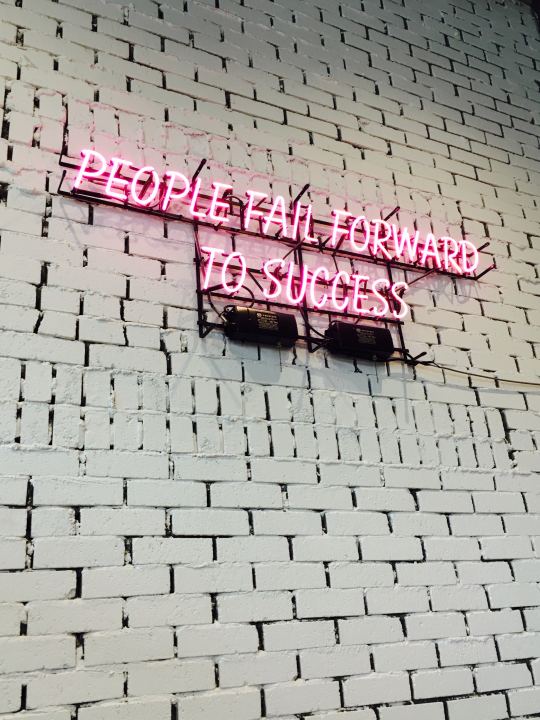
Going through some notes today for an upcoming conference session called Failure: It's a Feature, Not a Bug. Years ago I was at another conference as several of us were talking about gamification and included content about normalizing and reframing failure and such. One Dutch attendee I spoke with later laughed at how Americans had an issue with failure. He said something to the effect of "we just expect it."
Another friend in Spain frequently uses the acronym FAIL as First Attempt In Learning. In my notes I had been exploring other ways to use the letters to build positive views of failure, such as Forward Isn't Always Linear. I had, of course, come up with some negative ones too: F#@K, I'm a Loser.
I'll stick with the positive ones. And yes, the shortest distance isn't always a straight line. Especially when learning new things or making changes. Sometimes you have to step back or take a detour or try a different approach. These may not look like progress, but often are.
Photo by Ian Kim on Unsplash
6 notes
·
View notes
Text

Genuinely my longest habit since Friday art group in my school days.
#currently i am play-learning swedish#and before that french and russian (and some arabic japanese and spanish. and whatever else seemed interesting)#(i might just start looking at finnish because the language is nice)#personal log#duolingo#the gamification is annoying but not enough to stop
6 notes
·
View notes
Text

This silly little website is so cool
#Gamification of learning normally doesn't do it for me (mb it's alr overall but I'm thinking about duolingo rn&it's bad)#But this is awesome#Keybr.com btw
0 notes
Text
The Impact of Gamification in Learning and Development: SB Animation Leads the Way
In recent years, gamification in learning and development has emerged as a powerful tool for engaging employees, enhancing skills, and boosting performance. The integration of game-like elements into training programs can transform traditional educational methods, making learning more interactive and enjoyable. SB Animation, a leader in creative design and digital solutions, has been at the forefront of incorporating gamification into training and development initiatives, helping businesses create more dynamic and effective learning environments.
What is Gamification in Learning and Development?
Gamification in learning and development refers to the use of game mechanics, such as points, levels, challenges, and rewards, to encourage engagement, participation, and achievement within educational or training programs. It transforms the traditional approach to training by introducing elements of fun and competition, motivating learners to progress through courses, retain information, and apply new skills effectively. The concept is based on the idea that people are more likely to engage with learning experiences that mimic the enjoyment and satisfaction of playing a game.

At its core, gamification helps to make the learning process more engaging, interactive, and enjoyable. By adding elements of fun and competition, learners are encouraged to take an active role in their own development. This shift in approach not only makes training more enjoyable but also helps in better knowledge retention and skill application.
Why Gamification Works in Learning and Development
Gamification works because it taps into intrinsic motivations, such as the desire for achievement, recognition, and competition. By using elements like leaderboards, badges, and rewards, learners are motivated to complete tasks and challenges, making the experience feel more like a game than a traditional educational process. The instant feedback that comes with completing levels or earning rewards provides learners with a sense of accomplishment, which can increase their motivation to continue progressing.
The Future of Gamification in Learning and Development
The future of gamification in learning and development looks promising, with more organizations recognizing its benefits in enhancing employee engagement and performance. As technology continues to evolve, gamified learning experiences will become even more immersive and interactive, incorporating virtual reality (VR) and augmented reality (AR) to further enhance the learning process.
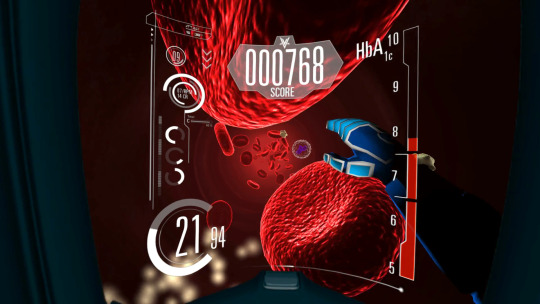
SB Animation’s commitment to innovation means that the company is well-positioned to lead the way in creating next-generation gamified training solutions. As businesses continue to seek new ways to engage their workforce and improve skills, gamification will play an increasingly important role in shaping the future of learning and development.
Conclusion
Gamification in learning and development is revolutionizing the way businesses approach training, making it more interactive, engaging, and effective. SB Animation’s expertise in creating gamified content allows organizations to provide their employees with unique learning experiences that not only increase knowledge retention but also foster motivation and collaboration. As gamification continues to evolve, SB Animation will remain at the forefront, helping businesses create dynamic and enjoyable training programs that drive real results.
0 notes
Text
Redefining Learning: The Game-Changing Approach of Learning Through Play
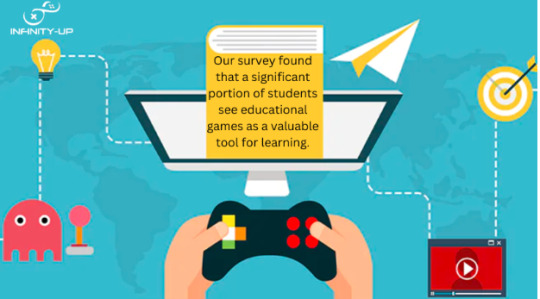
Games aren’t just for fun—they’re powerful educational tools! This article explores how game-based learning enhances engagement, boosts retention, and sharpens critical thinking. Let's look at how different game mechanics can be applied to various educational contexts and the benefits of incorporating play into traditional learning environments. Read the full article here: https://lnkd.in/d-HA2S84 Let's create engaging learning experiences together. Contact INFINITY-UP to get started!
#gamification#education#elearning#learning#edtech#artificial intelligence#traning#engagement#fintech#video games#gamedesign#marketing#gamedevelopers#browsergames#gamechanging#sales#Infinityup
0 notes
Photo
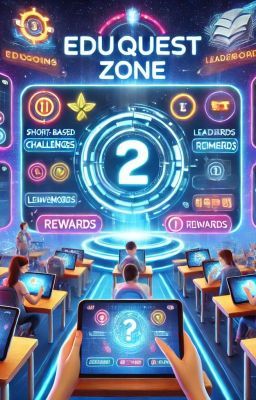
The Power of Microlearning: How Short Quizzes Improve Retention (on Wattpad) https://www.wattpad.com/story/389529791-the-power-of-microlearning-how-short-quizzes?utm_source=web&utm_medium=tumblr&utm_content=share_myworks&wp_uname=eduquestzone Traditional learning methods often involve long lectures and dense study materials, which can overwhelm learners and lead to low retention rates. Microlearning, which delivers content in small, digestible chunks, has emerged as a powerful way to boost knowledge retention. Short quizzes are one of the most effective microlearning tools, reinforcing learning through active recall. EduQuestZone, a gamified eLearning platform, takes microlearning to the next level by offering quiz-based learning with eduCoins, rewarding users for their engagement. This article explores how short quizzes enhance memory retention, improve engagement, and make learning more effective and enjoyable.
#education#educoins#eduquestzone#elearning#engagement#gamification#gamified#interactive#knowledge#learning#microlearning#online#quiz-based#quizzes#repetition#retention#rewards#spaced#student#n#books#wattpad#amwriting
0 notes
Text
youtube
Trying to Speedrun Duolingo in a Random Language
#duolingo#wow imagine if she had done the speedrun after the heart system was implemented...#language learning#gamification#apps#Youtube
0 notes
Text
gamification in learning and development
Gamification in learning and development, therefore, is a methodology where learning fun is brought forth through the addition of game features and elements such as challenges, rewards, and tracking the progress. Gamification keeps people motivated and hence makes education seem more exciting because learning can, in a manner of speaking, be a bit of a game.
In businesses, gamification is used to provide a rich learning experience for employees. Instead of the old ways of doing things, employees can engage in fun games to learn new skills. They can earn rewards in the process, motivating them to learn further.
This method also helps children in schools keep their minds active and focused. When children learn playing games, the more probable they are to pay attention to what they have to do so that they would do better on their studies. The instant feedback provided in the games helps students know what they do right and where they need to improve.
Macrobian Games is a company specializing in gamification in learning and development. It has developed games meant to help learners at any age learn new skills. In this case, the learners are able to increase their knowledge as they enjoy the games. for more information visit on :
#gamification in learning and development#gamification#made with unity#game development#unity 3d#game#game of thrones#games#indie games#ask game#game dev#pc games#india#ahmedabad#gujarat
0 notes
Text
I am a doctoral student working on my dissertation. I am looking for faculty participation in a gamification and games-based learning survey.
Faculty Attitudes on Gamification and Games-based Learning in Online Teaching
UNC Charlotte researchers are conducting this study on faculty attitudes toward gamification and games-based learning in online teaching. This study aims to understand what, if any, relationships exist between faculty attitudes toward gamification and games-based teaching in online teaching and external factors.
· A faculty member at a four-year public university. (Grad Student instructors are also welcome, international schools as well!)
Inclusion/exclusion criteria: You must have the following attributes to participate in this survey:
· 18 years or older
· Have taught at least one fully online or hybrid course since Fall 2023.
You could win one of (4) $25 Amazon Gift Cards if participating in the drawing. Otherwise, you will not receive compensation for participating in this study.
If you wish to participate in the survey or obtain more information, visit: https://surveys.qualtrics.charlotte.edu/jfe/form/SV_cZN7ALxu6fcyaJ8
#gamification#faculty#grad student#higher education#dissertation#research study#university#teaching and learning#faculty attitudes#faculty opinions
0 notes
Text

Plant type Pokémon fans?
I've done this word search for my pupil Alexander who has difficulties in writting and reading in Spanish
0 notes
Text

I've done this word search for my pupil Alexander who has difficulty in writting and reading (spanish)
Do you like it?
0 notes
Text

Can Gamified Learning Be Useful for Sales Training?
Did you know that games are the best way to learn compared to traditional learning? They increase learner confidence by 20%, improve knowledge by 11%, and enhance knowledge retention by almost 90%.
The future of workplace learning is interactive, engaging, and “dare we say” fun. Gamification cater perfectly to the needs of the modern workforce, by offering a dynamic and rewarding learning experience. By incorporating game-like elements in your sales training, you can create a training program that not only captures attention but also delivers real results.
Are you ready to level up your training and unlock the full potential of your workforce?
Visit https://leveluplms.com/sales-training-lms/ to explore the best practices for developing a sales training program today.
#leveluplms#best lms#learningmanagementsystem#lms software#sales training#gamification#sales training lms#gamified learning#wednesday
0 notes